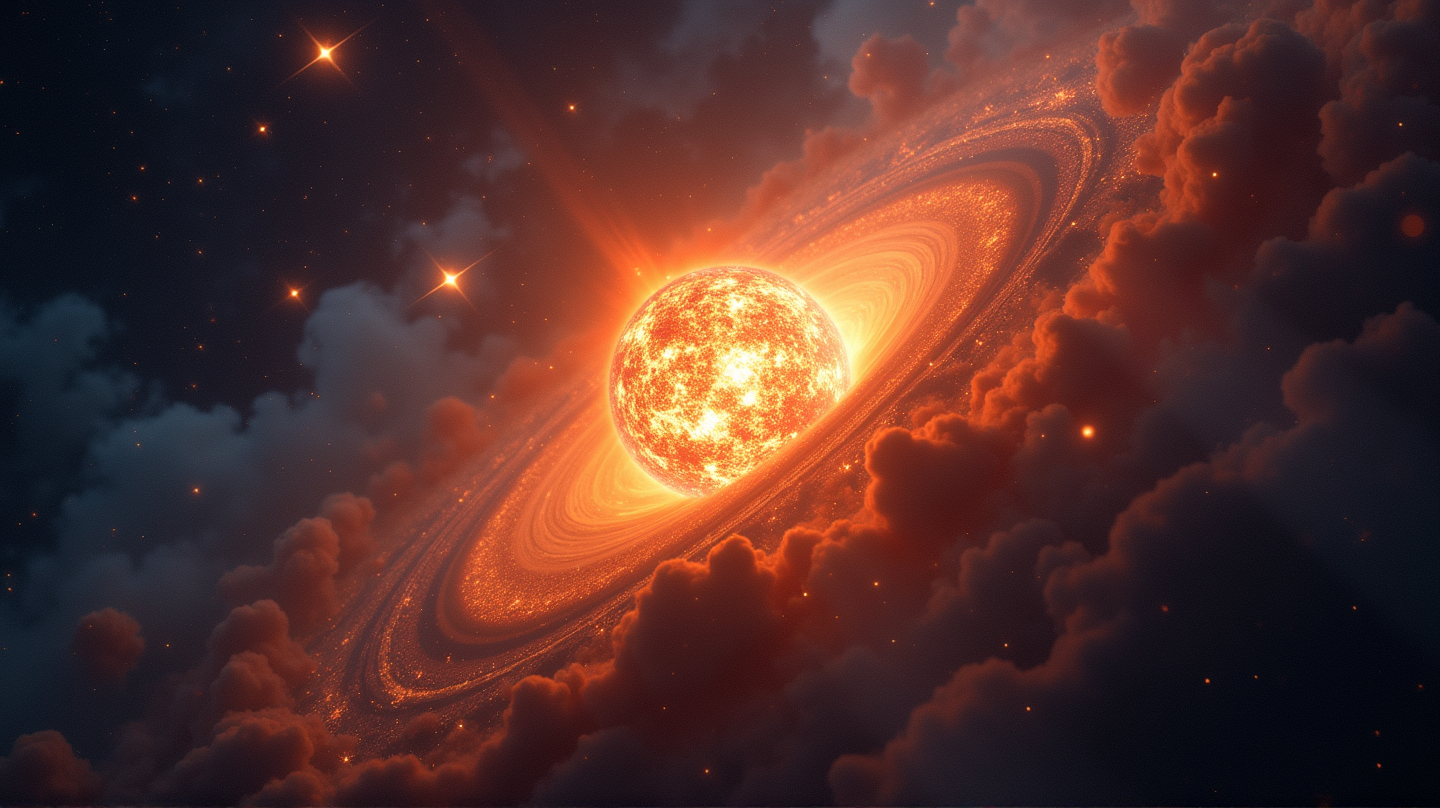A Cosmic Mirror: HOPS-315 as a Twin of Our Solar System
HOPS-315 unveils a celestial 'twin' of our Solar System, offering an unprecedented glimpse into planetary genesis.

The vastness of space unfolds endless mysteries, yet none as captivating as the birth of a celestial ‘twin.’ Astronomers, in a profound discovery, have captured images of HOPS-315, a nascent star system eerily reminiscent of our own early solar system. This celestial revelation shines a light on the cosmic cradle that may forge future worlds.
The Birth of a Star Twin
Within the depths of 1,300 light-years away, HOPS-315 has emerged as a Sun-like protostar surrounded by a tumult of hot minerals and silicon monoxide gas. According to Gizmodo, this young star is cradled within a protoplanetary disk, a stormy region where planets are birthed. Melissa McClure, leading the exploration of this cosmic playpen, marvels at the robust planet-forming compounds here, a quintessential chapter in understanding our solar system’s origins.
Peering Through the Cosmic Veil
Using the advanced lenses of the James Webb Space Telescope (JWST) and the Atacama Large Millimeter/submillimeter Array (ALMA), McClure and her team have pierced the curtain of interstellar gas to observe ‘wiggly, hairy-looking’ signatures. These signals indicate early planet formation in progress, an opportunity astronomers seldom encounter in such youthful star systems.
The Dance of Planetesimals
Among the cosmic dust, the formation of planetesimals—fragments that congregate to form planets—is underway. These tiny, ephemeral structures have remained elusive until now, observed indirectly through meteorite studies. With HOPS-315, astronomers gaze directly into the heart of these celestial forges, adding new chapters to the story of planetary creation.
Linking Past and Present Technologies
This discovery also highlights the synergy between past and future. By revisiting data from the now-retired Spitzer Space Telescope with JWST’s advanced imaging, astronomers have managed to unwrap the layers of our galaxy’s dynamic history. Much like the Cosmic Tornado, Herbig-Haro 49⁄50, previously observed by Spitzer, unveiled anew by JWST’s resolution, HOPS-315 illustrates the evolving tapestry of space exploration.
A Celestial Symphony Continues
This journey through space and time bears witness to the relentless pursuit of cosmic truths. As astronomers delve deeper into these signals, each discovery enriches our understanding, painting a richer and more joyous portrait of our universe. The embryonic drama of HOPS-315 stands not just as a milestone but as a beacon—a testament to humanity’s unyielding quest to explore and understand the cosmos.
Through these celestial telescopes, we peer into the luminous cradle of creation, understanding not only the universe but the origins of our existence. HOPS-315, with its promise and mystery, kindles a flame of cosmic curiosity—a bright, beautiful star ready to illuminate the night sky of human knowledge.

